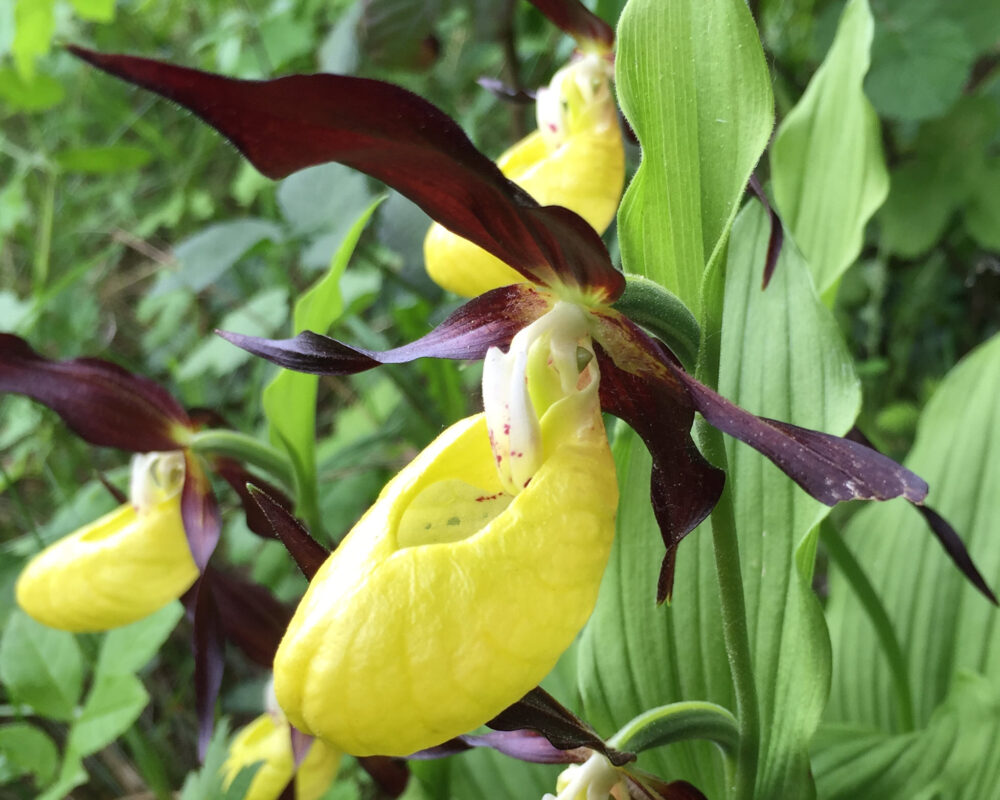
These little beauties are called Cypripedium calceolus they are a lady’s-slipper orchid, and the type species of the genus Cypripedium. It is native to Europe and Asia. Yellow lady slipper was first described in Germany in 1753, then later scientifically classified by Swedish botanist Carl Linnaeus.
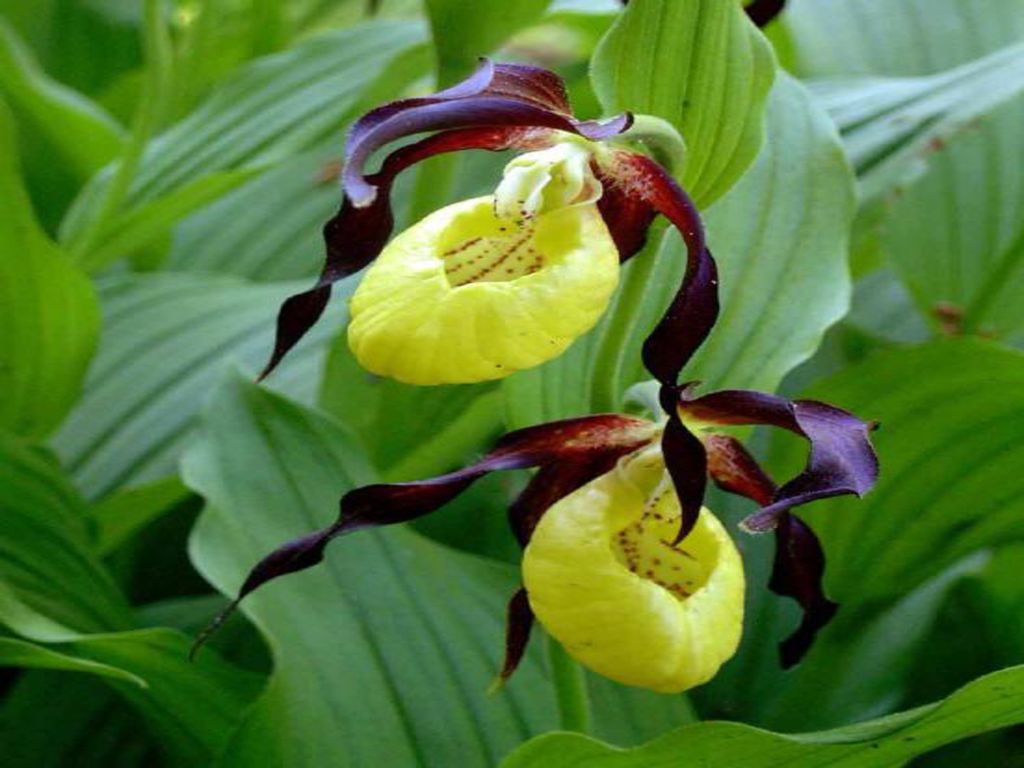
The Latin translation for calceolus is ‘little shoe’, referring to the shape of the labellum (lip). The labellum is the part of the flower of an orchid that serves to attract insects, which pollinate the flower, and acts as their landing platform.
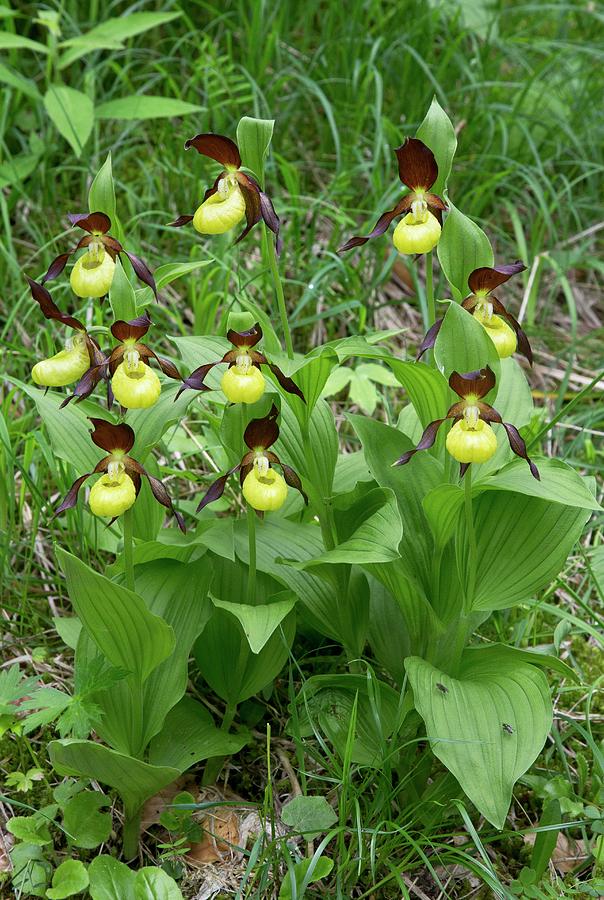
Arising from a rhizome, yellow lady slipper is a perennial wildflower found in mesic and seepy forests as well as other habitats. It is one of the largest of the orchid varieties in its range.
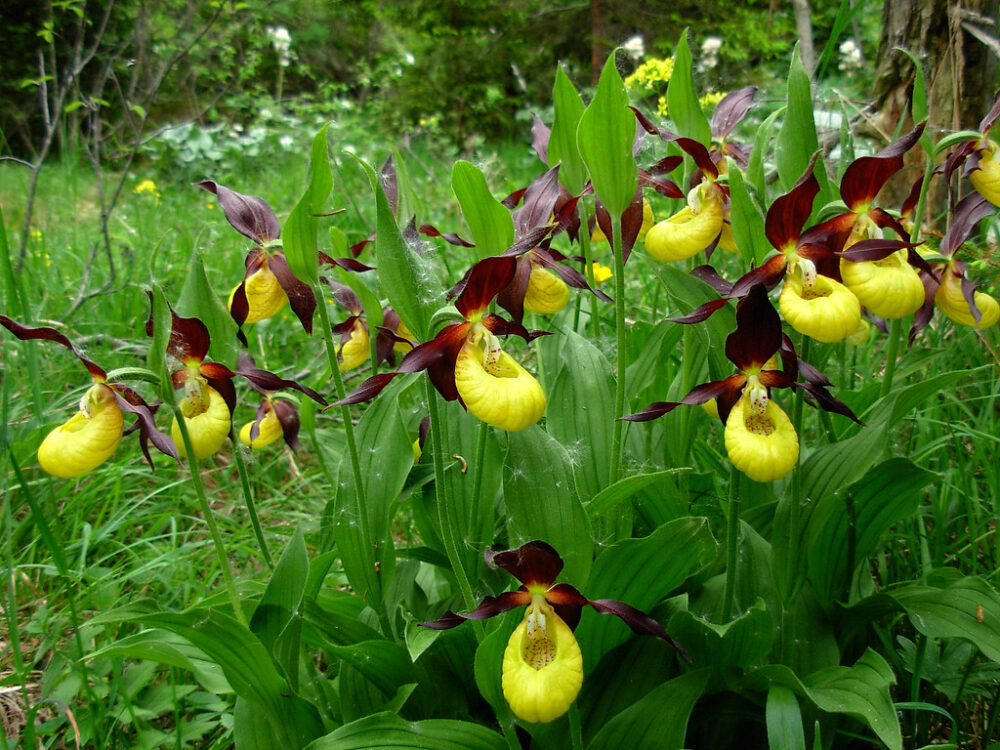
Each plant will produce 1 or 2 blooms. They vary in color from reddish-brown to black, and occasionally green.

It can be difficult to transplant. This plant needs deep, organic soil to thrive. It is one of the easiest native orchids to maintain in a woodland garden. “Nursery-grown” plants of this type are often poached from the wild, so verify that the plants are nursery propagated before purchasing one. This plant is considered an NC Significantly Rare species.
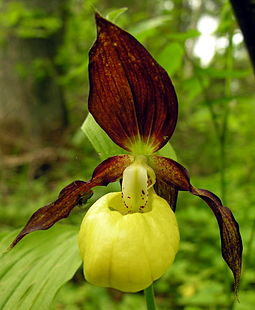
Although not classified as endangered, climate change and human encroachment on this plant’s habitats place some risks for this plant’s future in the wild. Adjusting for these hindrances, the plant has adapted to other environments, including locations where humus is present and over areas consisting of a limestone base. It is also frequently found in the proximity of hazel trees.








